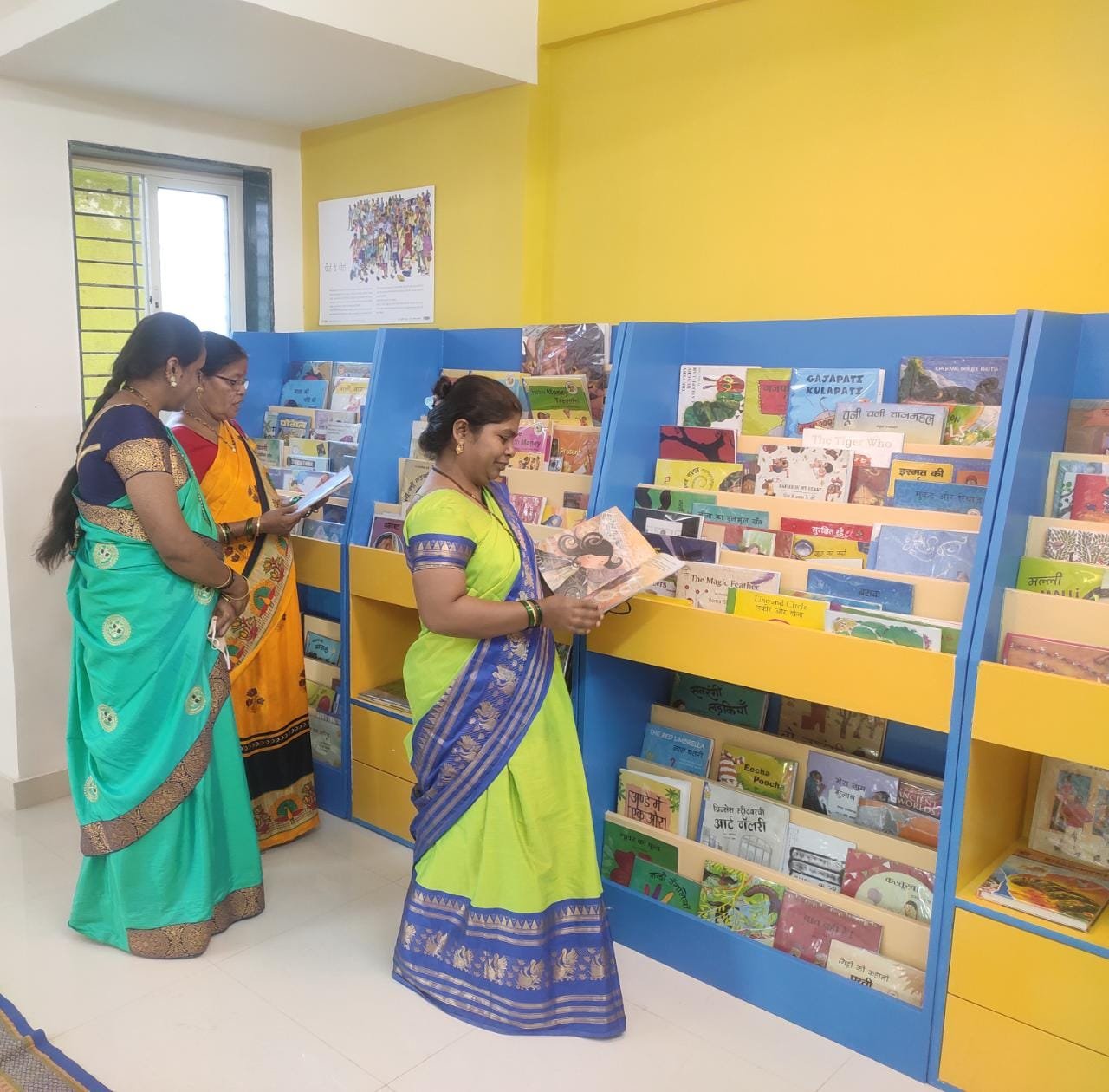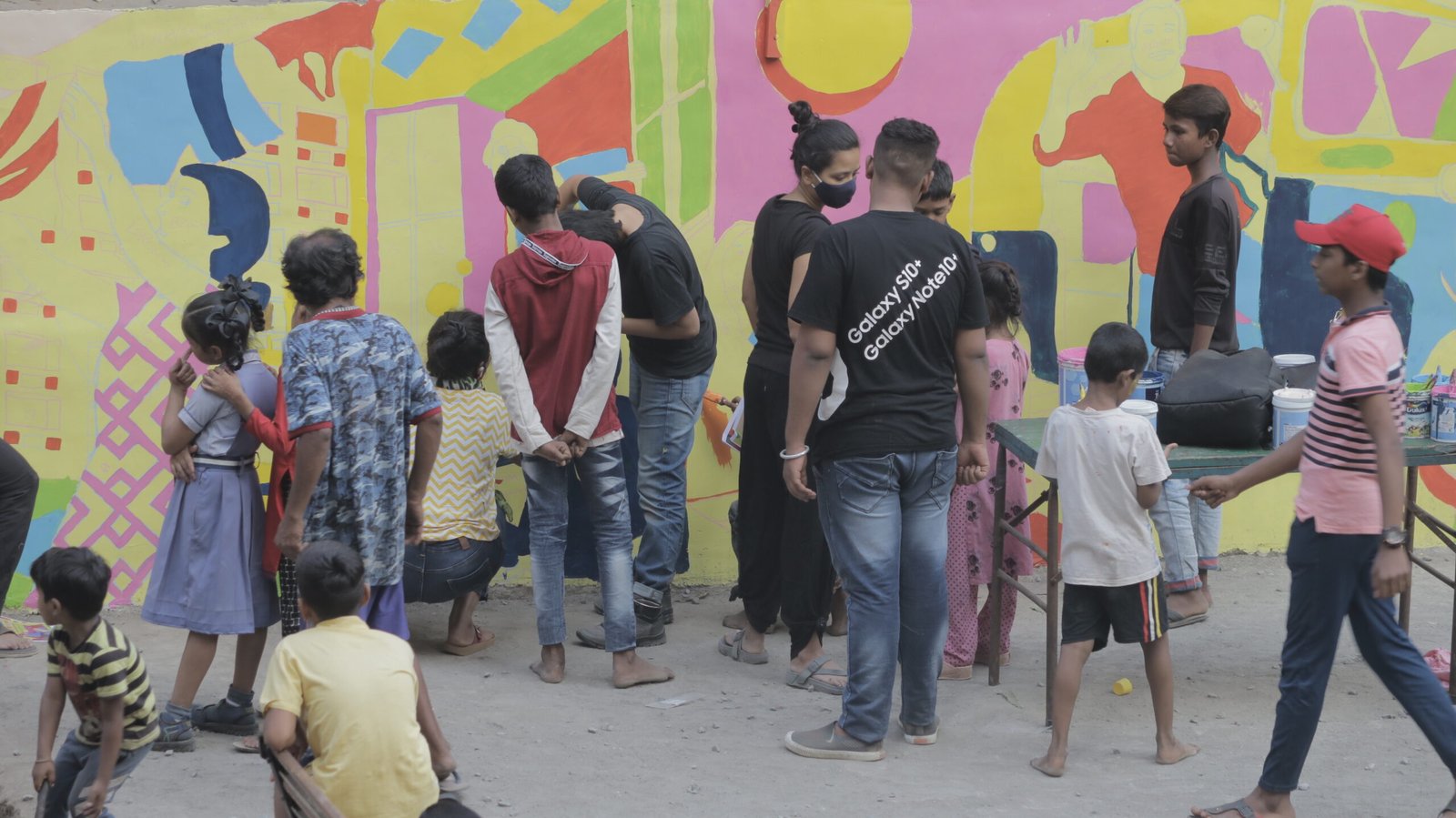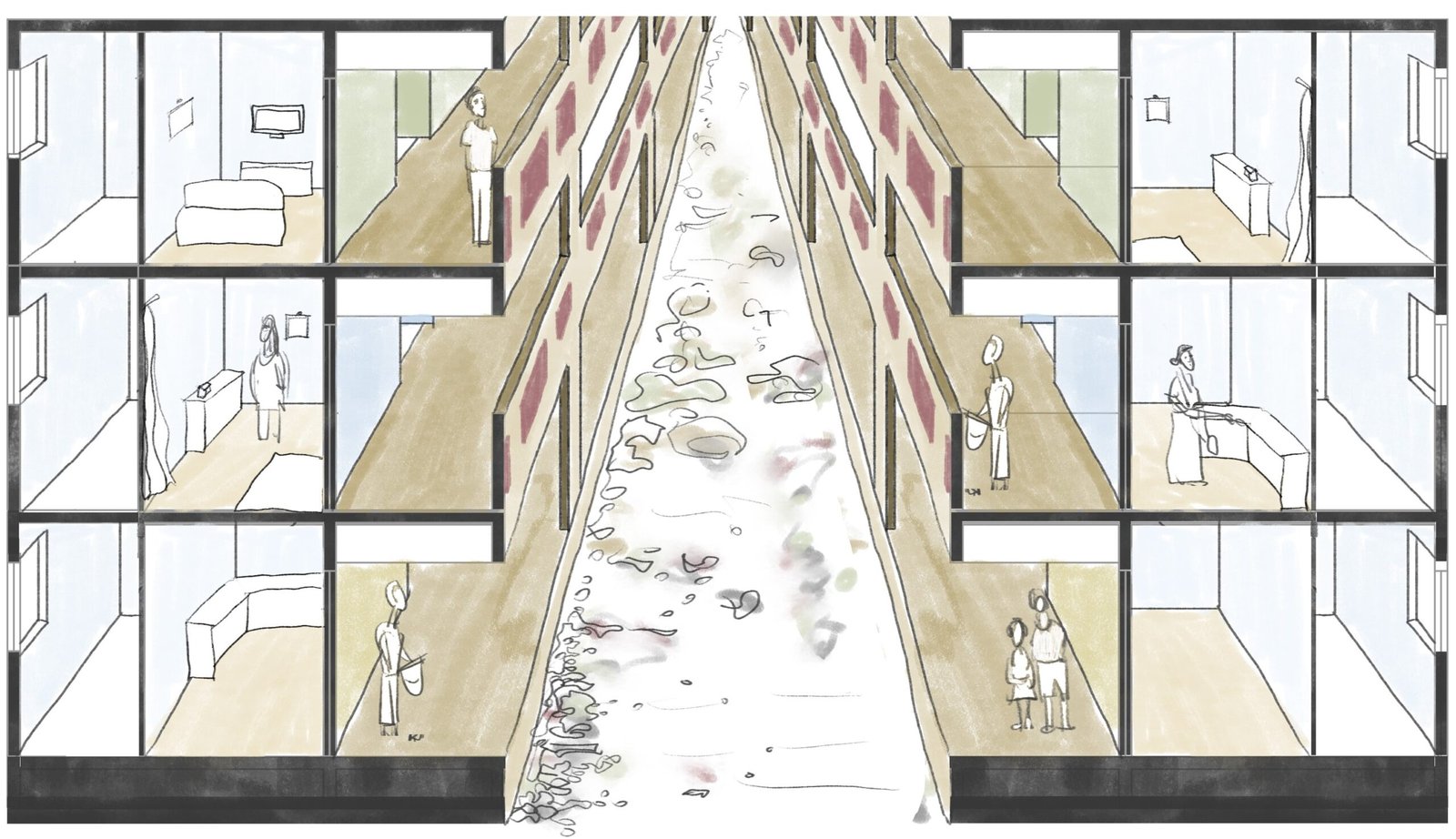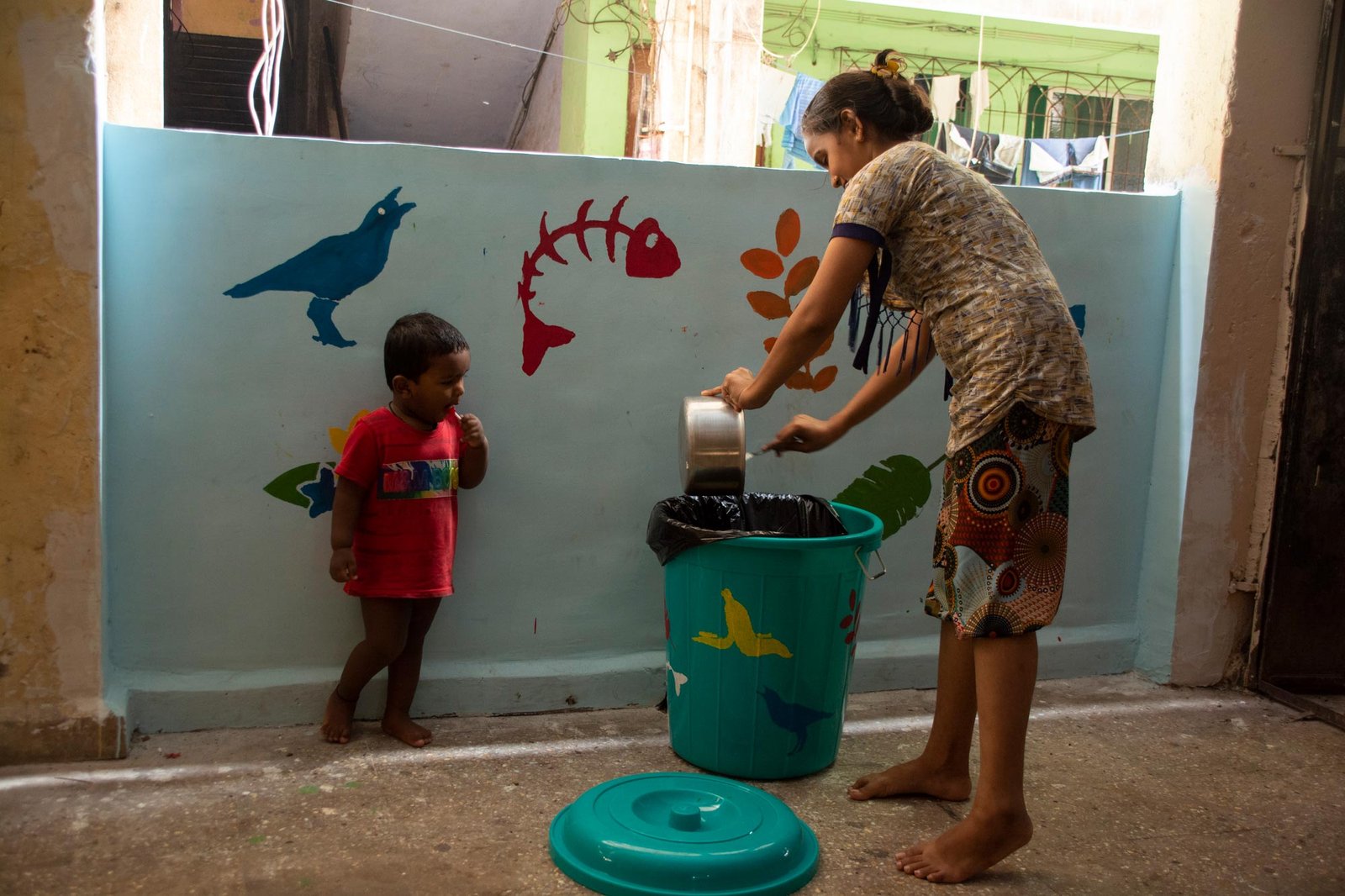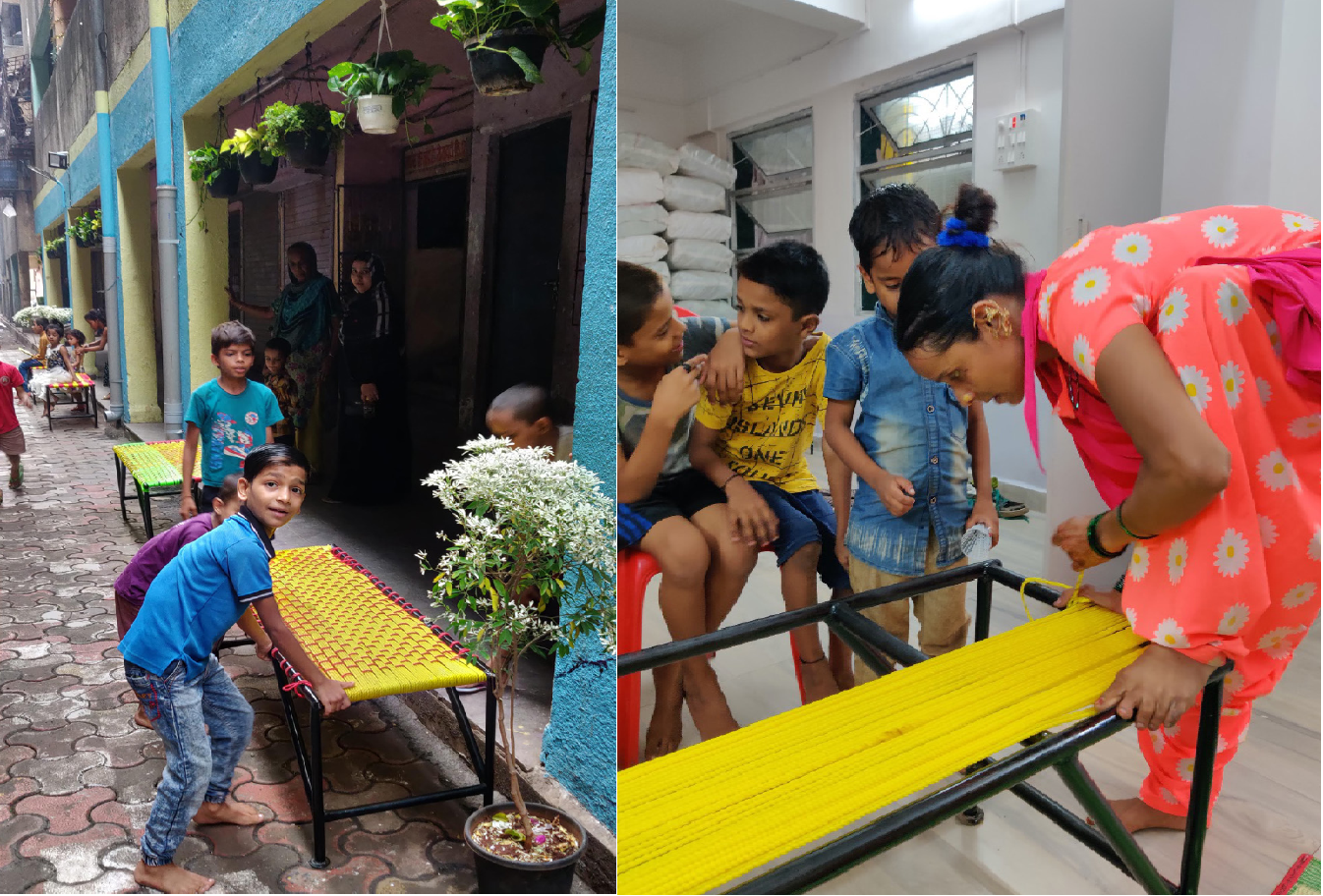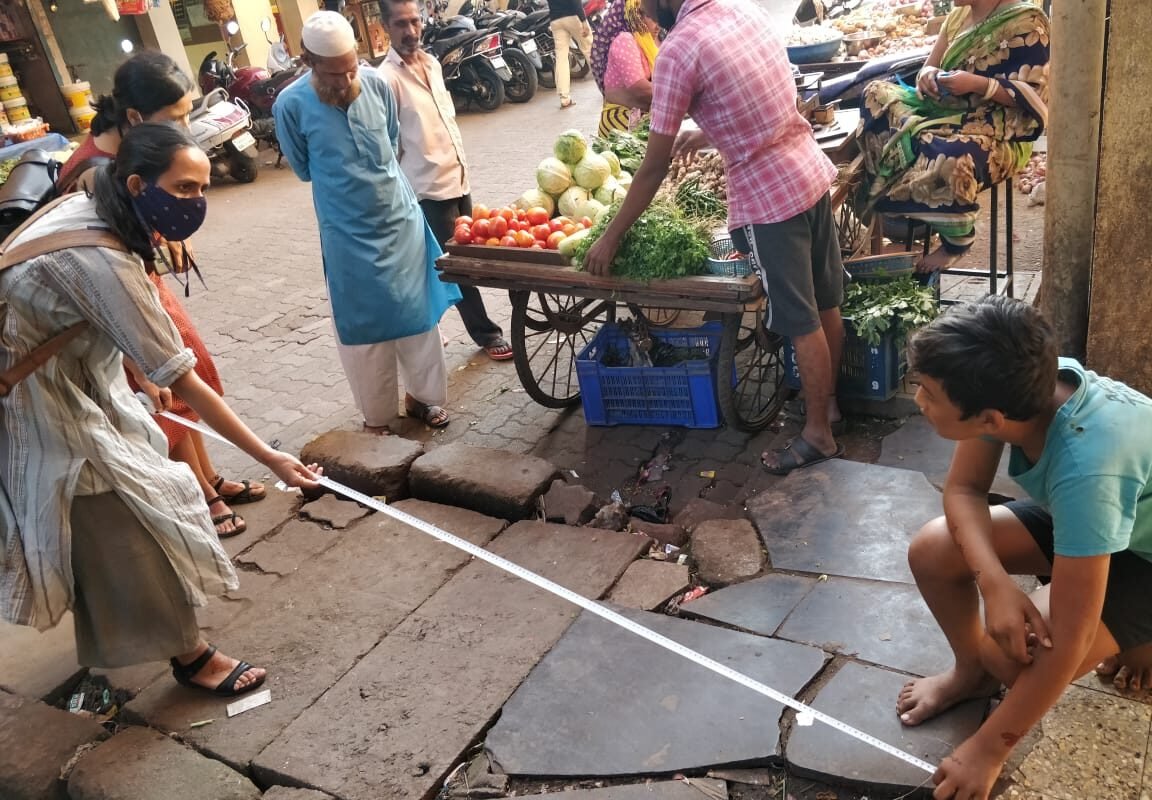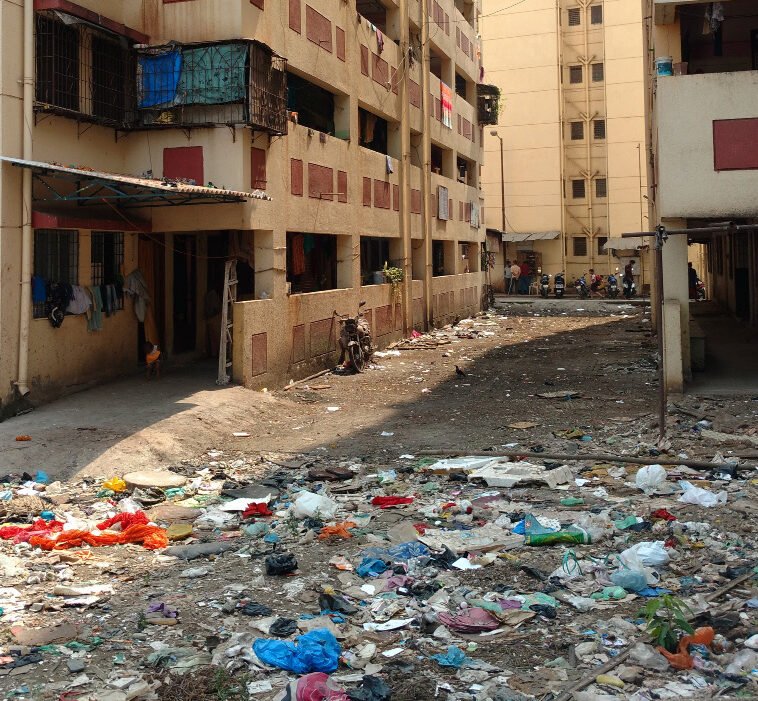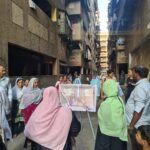OVERVIEW
With more than 25,000 people packed into a tightly laid out grid of 61 (Ground + 6) buildings across 5 hectares, the population of Natwar Parekh Colony (NPC), a public housing neighbourhood in Mumbai, is comparable to that of a Tier-3 city in India.
As a result of poor planning, more than 70% of the residents live with no access to sunlight, air ventilation or open spaces in and around their homes. Community Design Agency has been working with the residents of NPC since 2016 to understand the impact of the poorly designed space on their lives and find solutions that can trigger transformation.
CONTEXT
NPC was built in 2007 as part of the Rehabilitation and Resettlement Plan (R&R) with the aim to provide formal housing to slum and pavement dwellers from different parts of Mumbai. Till 2018, people from more than 10 different locations across the city were relocated to NPC. Most of the residents were Project Affected People (PAPs), i.e. people relocated to make land available for the city’s expansion and infrastructure projects. The residents were allotted homes through a lottery system and they didn’t have a say in where and whom they wanted to live with.
Our Programs
- Livelihoods
- Waste Management
- Public Space Design
- Children's Learning and Development
- Youth Engagement
- Site Infrastructure
Street vending in Natwar Parekh Colony started right after the first residents moved there in 2008, serving as a livelihood option for a number of people who are unable to travel long distances to work. Within the settlement, this provides easy access to a variety of essentials like fruits, vegetables and groceries.
The vendors have been facing strong opposition from the local authorities, as the perception is that they block roads, which hampers movement within the colony. We are working with the street vendors to help them organise both socially and spatially.
Read more about our Spatial Reorganisation Workshop with the street vendors of Natwar Parekh Colony here
A number of issues around the built environment, including garbage, are a result of poor planning and design. The 4.5 meter narrow alleyways between the buildings at NPC are often littered with garbage that residents haul over their balconies. Through frequent engagement and on-ground observations we gained a deeper understanding of how the waste management issue was actually a symptom of a larger problem emerging from a deep-rooted lack of ownership within the colony. This lack of ownership and participation has extended to their relationship with open spaces. Together with the residents, we approached the issue through a participatory process and designed small interventions around it.
Read more about the waste interventions here.
Many residents of NPC came from slums where open, common spaces used for play, leisure and other common activities were available. In contrast, in NPC, such spaces make up less than 18% of the area, and most of what does exist is encroached by water tanks, parking spots or makeshift commercial setups. By focusing only on physical structures and amenities, the residents’ quality of living and their social bonds deteriorate. The lack of common spaces has a profound impact on the community – both social and infrastructural. Through design interventions led by the community, we are attempting to demonstrate the potential in such spaces that will help the people recreate their sense of collective ownership.
Watch this video to learn more about our public spaces initiative
Kitaab Mahal – Library Initiative
Due to the pandemic, at least a 1000 children at Natwar Parekh haven’t been able to continue with their education. The lack of space in their 225 square feet homes, and lack of access to smart devices and internet to attend online classes has only widened the existing gap in learning resources between low and high income communities. The library initiative will be community owned and led, and will help create a space where children can interact with each other and learn together again.
Few selected members of the youth will be trained as library educators through a course designed by Sahyog Trust, an educational NGO. CDA will run design workshops with the selected group to design the library. The implementation of the library design will be carried out with full participation and supervision of the community.
Digital Learning Initiative
Our digital learning initiative is an attempt at bridging the gap of unequal access to digital learning tools, especially in light of the pandemic. With the help of partner organisations and local representatives, 3 computers were donated to the community and installed at the community centre.
Over 120 children from the ages of 5-18 have signed up to improve their computer skills and are being taught by some of the older boys from the neighbourhood. This is a welcome break for the children and their parents from online schooling and the limited options for playtime in the middle of a pandemic.
This video has been shot and edited by a talented young community member and upcoming rapper, Moeen Khan.
Youth make up 19% of the total population living in NPC. Like young people everywhere, they are one of the most active groups in the community, but cramped houses, lack of open spaces, and deplorable infrastructural conditions has made this space inaccessible to the most active group of the neighborhood restricts their energy, dreams and sense of self worth. This has led to multiple issues of unsafe practices such as drugs and crimes. Most girls in the community do not feel safe to play in the colony and many boys get pulled into more such unsafe activities. As a result, families often do not allow young people to interact with their peers or step out to play.
To help find a way to change this paradigm, our first initiative with the youth was to simply understand their needs and give them a space to collectively express their concerns about the community. They are the future of this neighbourhood, and it seemed important to engage with them as well as help them engage with their space. Our conversations till date have been around recognising and addressing the issues of safety and access within the community through participatory mapping. With them, we continue to explore solutions and create design interventions towards achieving a better and safer colony.
The first activity taken up by the youth was to conduct a demographic survey, which was executed over a few weeks where the youth went from house to house collecting information from each household on a data collection app on their phones. The activity helped them connect with the residents of their neighbourhood as some of them had never ventured out of their own buildings before. Since no such repository of demographic data exists for the community, this exercise was especially useful for the residents responsible for the maintenance of the neighbourhood.
Broken infrastructure is a routine sight in NPC. Broken drain pipes oozing sewage on streets, piled up garbage and lack of street lighting are some of the glaring infrastructural issues that have become a permanent part of the colony’s life. These infrastructure repair issues, which should ideally be fixed within days, sometimes either take months or don’t get repaired at all. Co-operative housing societies are supposed to be given funds for the upkeep and maintenance of their buildings. However, due to bureaucratic loopholes, funds either take years to reach the respective co-op societies or are never released. Together with the federation, we are surveying and mapping the infrastructural issues in the colony. This helps gauge the issues at scale and propose it to the concerned local authority to support in repairing it.
Impact
- 25,000 residents from 5856 homes engaged with across several programmes
- 3000 youth served in the local community
- Designed and built 3 social spaces – Aawaaz, Kitaab Mahal, and HumRaahi
- 900 square meter of open space reclaimed, to be redesigned
- 43 RWAs registered across building clusters
- 14 hours of programming every week on average
- 140+ youth mentored in Govandi Arts Festival
“When we sit in Awaaz, the tensions we carry in our minds begin to ease, and we start to feel that something truly good is happening. It’s the same comforting feeling as sitting near the sea. In fact, sitting in Awaaz gives us that very same sense of peace, there’s no need to go to the sea.”
– Shaikh Samrin Mohammed Naim, Community Organizer
Learnings
Our project at NPC involves continuous learning and adapting. The interactions have helped us learn about the community’s challenges on a personal, social and economical level which inform our overall process. The COVID-19 pandemic deepened the social and economical inaccessibility as many lost their livelihoods and could not put food on the table. In a marginalised community where issues of livelihoods, infrastructure and education are all interconnected, it has been a learning to find methods to address them while also being limited by our scope, which feeds into all other projects at the studio and sets a precedent to our processes.
- Mhada Colony, Natvar Parekh Compound, Shivaji Nagar, Mumbai, Maharashtra 400043, India
Project Details
Year: 2016
Status: Ongoing
Location: Mumbai, Maharashtra, India
Size: 5 hectares
Services: Design Research, Community Engagement, Participatory Design and Mapping, Public Space Design
Partners: Residents of Natwar Parekh Colony, Municipal Corporation of Greater Mumbai (BMC), Maharashtra Housing and Area Development Authority (MHADA), Asia Initiatives, Youth for Unity and Volunteer Action


